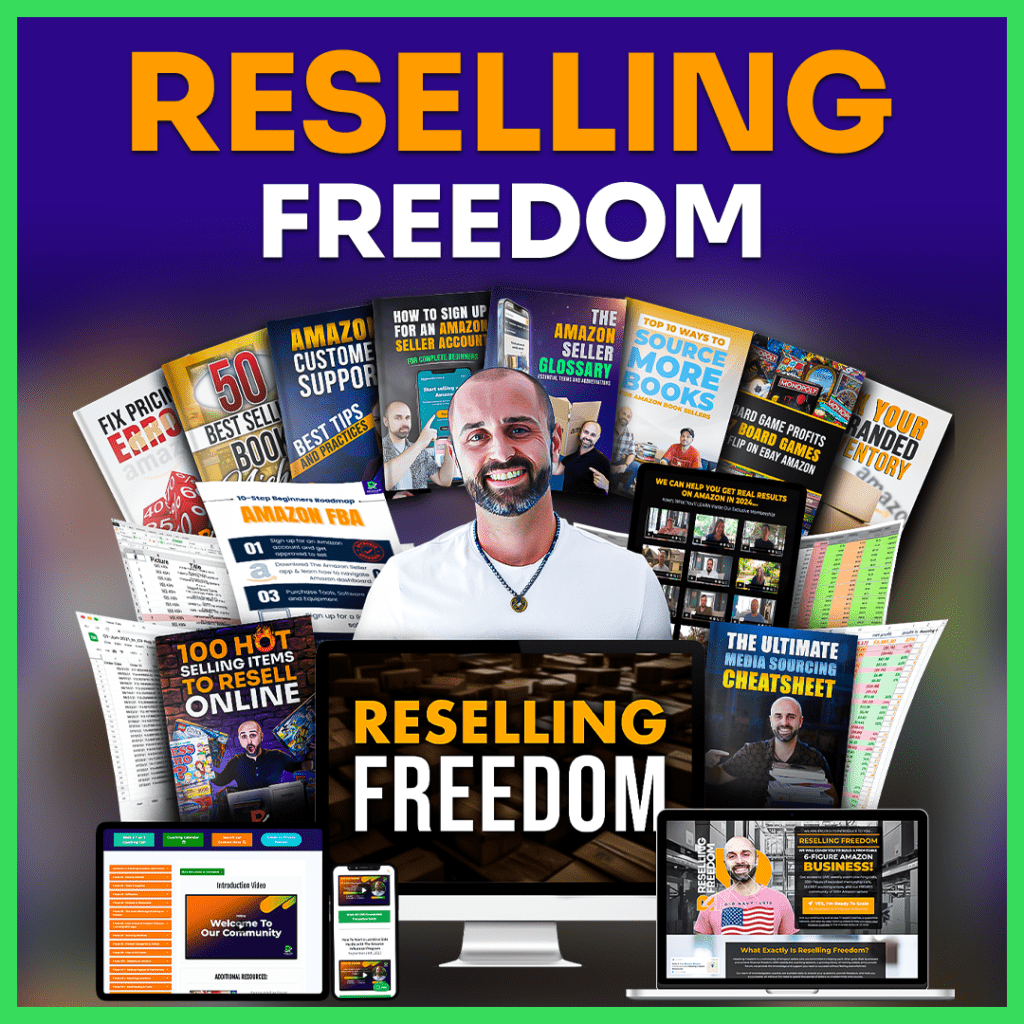
I recently sat down with my friend Caleb, who's been flipping products from eBay to Amazon for over two years.
In the last 12 months alone, he’s generated $461,000 in revenue and is on pace to hit $700,000 this year.
During our conversation, we dug into his journey, strategies, and the lessons he’s learned along the way.
If you’ve been curious about how eBay-to-Amazon (E2A) flipping works or you’re looking for a smarter way to scale your Amazon business, this breakdown will give you a complete roadmap.
Watch the video below:
Caleb’s Journey Into E2A
Caleb started selling on Amazon four years ago through online arbitrage (OA), where you buy products from retail or online stores and flip them on Amazon.
Like many beginners, he spent months learning through YouTube videos and testing strategies.
While OA helped him understand the basics of Amazon, he quickly ran into its biggest challenges: heavy competition, price tanking, and razor-thin margins.
Two years into his journey, Caleb discovered a better way:
“I stumbled across FlipMine through a Google ad and gave it a shot. Right away, I saw better margins and less competition. It was a game-changer.”
That shift into eBay-to-Amazon flipping changed everything for him.
Unlike OA, where dozens of sellers compete for the same product, E2A focuses on rare, discontinued, or under-the-radar products that most sellers overlook.
This gave Caleb less competition, higher profits, and far fewer price wars.
Why Caleb Focuses on High-Ticket Items
One of the biggest factors behind Caleb’s success is his decision to focus on higher-priced products from the start.
His average selling price (ASP) is around $200, nearly double mine at $109.
This strategy gives him several advantages:
- Less sourcing time: Fewer units to buy means fewer hours spent hunting deals.
- Higher profit per sale: Caleb aims for at least $35 minimum profit per item, but many of his flips make $50 to $100+ per sale.
- Fewer shipments: By focusing on products with bigger margins, he avoids the grind of shipping hundreds of low-profit units.
“When I first started, I dreamed of selling expensive items and making more per sale. With E2A, I finally made that a reality.”
High-ticket items also make it easier to scale.
Caleb doesn’t need to chase thousands of sales per month to grow his business. Instead, he focuses on fewer, smarter flips.
Caleb’s Rules for Sourcing

Caleb’s approach to sourcing comes down to discipline and consistency. Every product he buys has to meet strict criteria:
1. Minimum Profit and ROI
Caleb never buys a product unless it hits his targets:
- Minimum profit: $35 or more per item
- ROI: At least 50%, but many deals reach 100%+
“I used to think 20% ROI was fine, but after factoring in returns, lost shipments, and price drops, I realized you need bigger margins to stay profitable.”
2. Sales Volume Sweet Spot
Caleb doesn’t chase products that sell hundreds of times per month. Instead, he focuses on low-competition listings:
- Looks for products that sell at least once per month.
- Sweet spot: 4 to 10 sales per month.
- Avoids crowded listings with dozens of sellers.
This strategy allows him to “fly under the radar” and avoid constant price wars.
3. Categories That Work Best
Through trial and error, Caleb’s found his sweet spots:
- Electronics like routers, modems, and niche tech items
- Toner and ink for discontinued or rare printers
- Commercial tools and equipment with steady demand
4. Categories He Avoids
Not every category is worth the risk:
- Health and beauty (too many counterfeits)
- Perfume (high fake rates)
- Supplements (compliance issues)
Handling Returns Without Losing Profit
When Caleb first started E2A, his return rate was as high as 35%.
Over time, he’s refined his buying process and brought it down to 15-18%, which is still high but manageable thanks to his margins.
How he fixed the problem:
- Always requests extra photos from eBay sellers.
- Avoids products without clear packaging or factory seals.
- Sticks to brand-new items whenever possible.
Even with occasional returns, Caleb’s high margins keep him consistently profitable.
How Caleb Scales Without Burning Out

In the beginning, Caleb was merchant fulfilling everything from his basement, packing hundreds of boxes himself.
That changed when he switched to Amazon FBA and partnered with Little Owl Prep Center.
“Moving to FBA and using Little Owl Prep was a game-changer. I save hours every week and can scale without drowning in shipments.”
Why FBA + Prep Centers Matter:
- Amazon handles storage, fulfillment, and returns.
- Caleb spends less time prepping and shipping.
- He can focus entirely on sourcing and growing the business.
This shift freed up his time to find better deals, refine his process, and scale faster.
The Tools Caleb Uses to Source Deals

Caleb relies on a small set of powerful tools:
- Replen Catcher: Uploads custom replen lists to track profitable items and find re-buy opportunities.
- FlipMine: Monitors live streams of deals across eBay.
- Keepa: Analyzes sales history and pricing trends.
- SellerAmp: Quickly checks competition, fees, and ROI.
“Replen Catcher finds items FlipMine doesn’t, and vice versa.
Using both helps me cover more ground and source faster.”
Building Capital and Scaling Slowly
Caleb didn’t start with huge resources. He began by borrowing $1,000, then $2,000, then $3,000, reinvesting every dollar back into inventory. Over time, consistent profits allowed him to secure his first bank loan and scale faster.
“I grew slowly and focused on profitability first. That patience is what helped me hit $461K this year.”
Tips for Beginners Ready to Start
If you’re just starting out, Caleb recommends:
- Start small – Test with one or two items before going big.
- Join a community – Surround yourself with experienced sellers.
- Leverage FBA and prep centers – Run the business without touching inventory.
- Target 50%+ ROI – Protect yourself from returns and price drops.
- Don’t ignore low-sales-rank products – Rare and discontinued items often sell fast despite no rank.
“If you spend 15 minutes finding one item that makes $50 profit, that’s $100 an hour. That’s how I built my business.”
The Secret to Less Competition

Most Amazon sellers chase high-volume, popular products, which leads to price wars and shrinking margins. Caleb does the opposite:
- Targets discontinued and rare products.
- Focuses on low-competition listings with fewer sellers.
- Uses Replen Catcher to track items others aren’t watching.
“People chase listings with 500 sales a month and end up fighting 30 sellers. I’d rather find something that sells five times a month where I’m one of two sellers.”
This strategy keeps his profits high and his business stable.
Key Takeaways
- Focus on high-ticket products to maximize profits.
- Use Replen Catcher + FlipMine to find hidden opportunities.
- Always verify item condition to reduce returns.
- Switch to FBA + prep centers to save time and scale.
- Stick to strict sourcing filters: $35+ profit and 50%+ ROI.
- Build strong relationships with eBay sellers for better deals.
- Go where other sellers aren’t looking — that’s where the best margins are.
Final Thoughts
Caleb’s story proves you don’t need thousands of products to build a six-figure Amazon business.
You need the right strategy, the right tools, and the discipline to stay consistent.
Whether you want to earn an extra $1,000 a month or grow into a $700,000 business, the opportunity is there.









